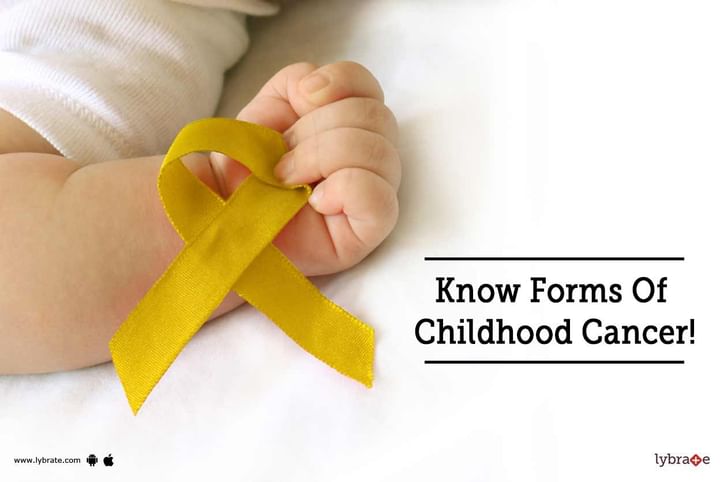Know Forms Of Childhood Cancer!
Childhood cancer is a blanket term that refers to a number of cancers that specifically affect children. They can happen anywhere in the child’s body. Like all cancers, childhood cancer too starts with a genetic deformity in a cell, which then divides and creates many more mutated replicas. This is cancer and it grows and spreads to different parts of the body. That is why it is important to be aware of childhood cancer. And awareness starts with knowledge. Here are the different kinds of childhood cancers you should know about-
1. Bone cancer
Osteosarcoma and Ewing’s Sarcoma are the two most prevalent forms of cancer of the bone tissue among children. Osteosarcoma is the more common of the two.
-
Osteosarcoma
We have two types of bone- flats bones (the ones ensconcing our brain) and the long bones (arms, legs etc). Osteosarcoma develops on the long bones, or more specifically along the metaphysic or the growing ends. The two most common locations of osteosarcoma are knees and upper arms. This cancer can also happen in the shoulders or pelvis.
-
Ewing’s Sarcoma
This is the second most common form of bone cancer and usually strikes teenagers. This kind of cancer is characterized by small round cells that are blue in colour.
2. Brain cancer
With 15% of all childhood cancers being brain cancers, this type of cancer is the second most common childhood cancer. They can grow inside the brain or in the tissues or structures near the brain. Accordingly, they are classified into-
-
Choroid plexus carcinoma
-
Craniopharyngioma
-
Ependymoma
-
Embryonal tumours
-
Medulloblastoma
-
Pineoblastoma
3. Leukaemia
Sometimes a child’s bone marrow produces unnatural White Blood Cells. These cancerous cells are called leukaemia cells and they cannot perform their regular functions as immunity cells which makes the child’s body vulnerable to diseases. These cells expand so rapidly that soon they outnumber all the other healthy WBCs, RBCs and platelets and blood cannot carry oxygen, hormones and clotting materials to different parts of the body.
4. Hepatoblastoma
This is a malignant tumour that develops in the liver. It usually happens in pre-school children and is more common in boys than in girls. Certain genetic factors like Beckwith-Wiedemann syndrome, Aicardi syndrome and familial adenomatous polyposis increase the likelihood of the development of hepatoblastoma.
5. Lymphoma
The lymph system is composed of vessels that connect the different lymph nodes to several organs like spleen, thymus, stomach, small intestine and tonsils and they transport a watery liquid called lymph that carries lymphocytes that are capable of killing germs and bacteria. If cancer develops here, it spreads quickly to all parts of the body.
Lymphomas can be-
-
Hodgkin’s Lymphoma
-
Non-Hodgkin’s Lymphoma
These malignant tumours develop in the nervous tissues of the sympathetic nervous system. Usually, this cancer shows up in the adrenal glands that are located on top of your kidneys. Neuroblastoma usually manifests before a child turns 5.
7. Rhabdomyosarcoma
These sarcomas develop in the supportive tissues of the child’s body such as-
-
Muscles
-
Fibrous tissues
-
Fats
-
Tendons
-
Blood vessels
-
Connective tissues
Rhabdomyoblasts are primitive cells that dwell in these tissues and when they become cancerous a child gets rhabdomyosarcoma.
If cancer develops in the retinal cells of the eye, a child contracts retinoblastoma. This cancer too sets in before the age of 5. It can occur in one or both eyes. Retinoblastoma does not spread to the surrounding tissues. Without treatment, it can lead to blindness.
9. Rhabdoid tumours
This is one of the most aggressive cancers and arises from the cells of the cerebellum. Rhabdoid tumours develop in very young children, usually around the age of 3.5 years.
10. Spinal Cord Cancer
The spinal cord is a fragile column of nerves that transmit messages from the brain to all parts of the body. Mutated cells can form a malignant tumour in the spinal cord and interrupt its functions.
11. Wilms’ tumour
It takes nearly 4 years after a child is born for all the kidney cells to mature completely. Sometimes these immature cells begin to mutate and expand uncontrollably. And they form a malignant tumour which has been named Wilms’ tumour.
If your child keeps complaining about pain or discomfort, take action right away. It could be something harmless or it could be a symptom of cancer which can be cured if detected early.



+1.svg)
